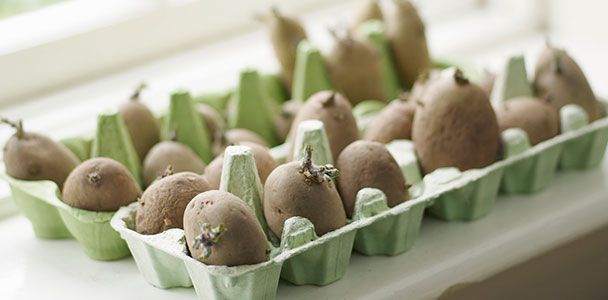We may be compensated if you purchase through links on our website. Our team is committed to delivering honest, objective, and independent reviews on home products and services.
Looking for a cool indoor gardening activity to do this season? Find all you need right in your compost bin. Kitchen-scrap gardening isn’t about growing a bumper crop, says gardening expert and author Melinda Myers, but transforming inedible parts of potatoes, apples, celery, and other produce is a fun and low-cost way to understand how plants grow. In this guide, we’ll explore the basics of kitchen-scrap gardening, including which plants work best, essential tools, and tips for success.
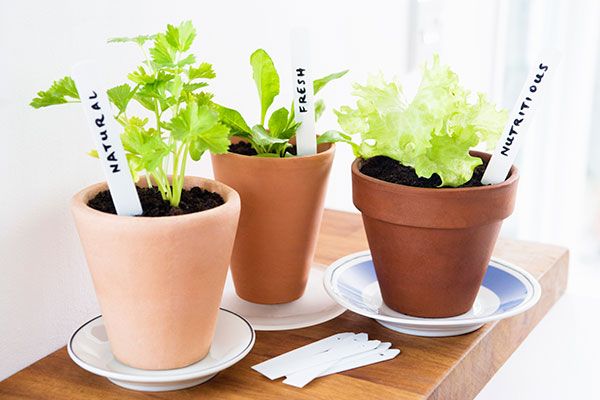
Understanding Kitchen-Scrap Gardening
Kitchen-scrap gardening is a unique approach to growing plants that utilizes parts of fruits and vegetables typically discarded during food preparation. Instead of throwing away items like potato eyes, celery bottoms, or pineapple tops, gardeners can repurpose these scraps to cultivate fresh produce. This technique works by harnessing the natural regenerative abilities of certain plants, allowing them to regrow from their inedible portions. One of the best parts? You can do this year-round, even in fall and winter.
Growing plants from kitchen scraps offers numerous advantages for both novice and experienced gardeners:
- Cost-effective: It reduces the need to purchase seeds or seedlings
- Sustainable: Repurposing food waste minimizes environmental impact
- Educational: It provides hands-on learning about plant growth and biology
- Convenient: Many scraps can be grown indoors year-round
- Fresh produce: Some scraps will produce homegrown fruits, vegetables, and herbs
Essential Tools and Materials for Scrap Gardening
Before starting your kitchen-scrap garden, gather the necessary supplies to ensure your plants have the best chance of success.
Container Options
Choose containers that provide adequate space and drainage for your plants. Options include:
- Recycled plastic containers with drainage holes
- Terra cotta pots
- Mason jars (for initial rooting)
- Small plastic cups (for seedlings)
Soil Requirements
Use a well-draining potting mix specifically formulated for container gardening. Avoid using garden soil, as it may be too heavy and lack proper nutrients. Gardening expert and author Myers recommends using a well-drained gallon-sized container of slightly damp potting (not garden) soil.
Lighting Considerations
Most plants require ample sunlight to thrive. Place your scrap garden in a bright location, such as a sunny windowsill or under grow lights. Myers suggests starting with a bright, sunny window for optimal growth.
Top Vegetables To Grow from Kitchen Scraps
Many common vegetables can be regrown from scraps, providing a continuous supply of fresh produce. Here are some of the best vegetables to try.
Potatoes and Sweet Potatoes
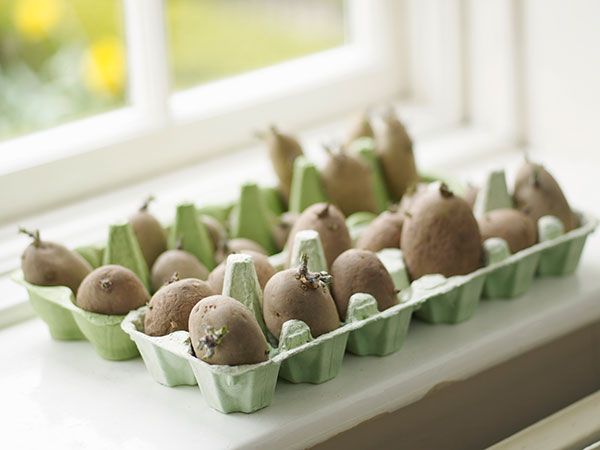
Both Irish and sweet potatoes are excellent candidates for scrap gardening. Myers notes, “Irish potatoes are an easy one to start with. And most people are familiar with seeing them break their dormancy in the pantry and start growing those little buds.”
To grow Irish potatoes:
- Cut out the “eyes” or buds, creating cubes about 1 1/2 to 2 inches in diameter.
- Plant the cubes 3 inches deep in the potting mix, with the eye facing up.
- Water thoroughly and place in a sunny location.
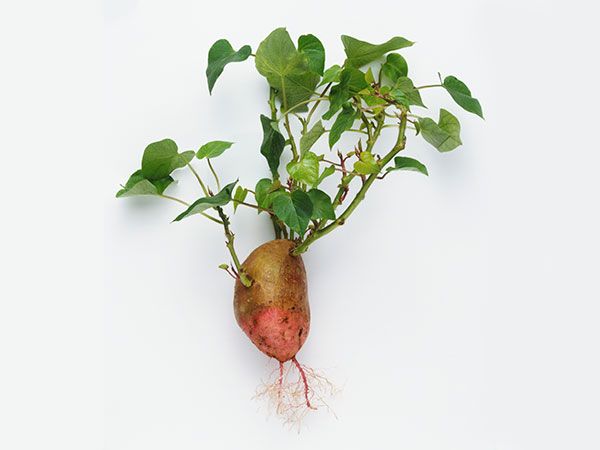
For sweet potatoes, cut off the end with the growing point and bury it 1 1/2 to 2 inches deep in the potting mix, point up. While sweet potatoes may not produce more tubers, they can grow into attractive houseplants.
Celery and Other Leafy Greens
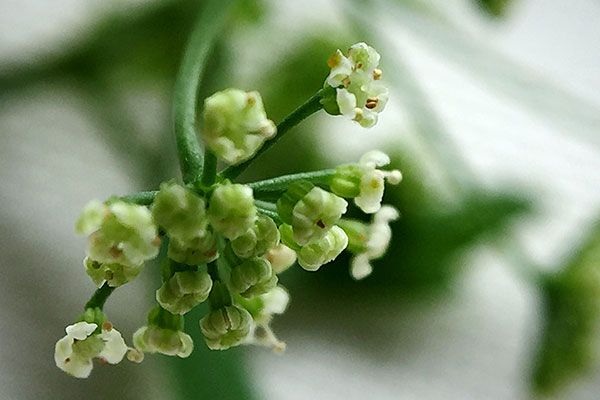
Celery is one of the easiest vegetables to regrow from scraps. Instead of throwing out the bottom inch of a crown of celery, plant it cut-side-up in potting mix. Within a couple of months, you’ll have some new stalks, which you can actually continuously harvest and regrow without replanting.
Other leafy greens that can be regrown from scraps include:
- Lettuce
- Bok choy
- Cabbage
Simply place the base of these vegetables in a shallow dish of water, then transfer to soil once roots develop.
Onions and Garlic
Onions and garlic are simple to regrow and can provide a steady supply of fresh greens. To grow onions, cut off the root end with about an inch of the bulb and plant it root-side down in potting soil. For garlic, plant individual cloves with the pointed end up. Over time, they will sprout new greens and eventually form new bulbs.
Carrots and Radishes
Carrots and radishes can be regrown from their tops. To do this, cut off the top inch of the root, leaving the leafy greens intact. Place the tops in a shallow dish of water, being careful not to submerge the foliage. After a few days, you will see new roots and green growth. Once the roots are established, transfer the tops to soil.
Fruit Plants You Can Grow from Scraps
While fruits generally take longer to produce than vegetables, they can make interesting and rewarding additions to your scrap garden. Here are some fruits you can grow from kitchen scraps.
Pineapple
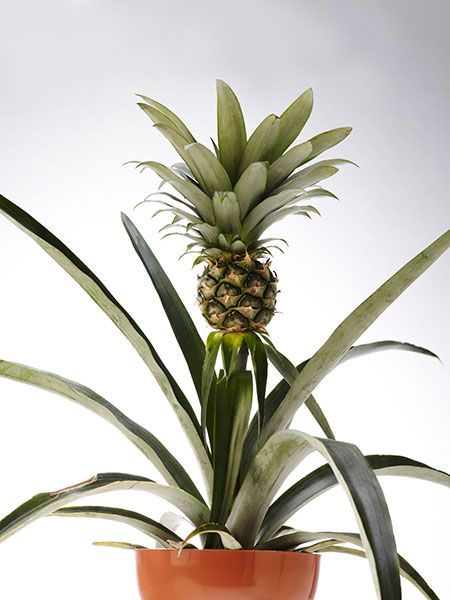
Growing a pineapple from scraps is a fun, long-term project. Myers provides detailed instructions:
- Cut off the top of a full-sized fruit and scoop out any flesh.
- Plant the cap under the soil, with leaves sticking out above.
- When leaves double in size (to about 10–12 inches), place a chunk of apple in the leaves.
- Wrap the plant in a clear plastic bag for about three days.
- Remove the plant from the bag, discard the apple, and continue growing in a sunny window.
- Within a month, a smaller pineapple will begin to form.
The apple chunk gives off ethylene, a gas that causes fruit to ripen and, here, initiates flowering.
Lemons, Limes, and Oranges
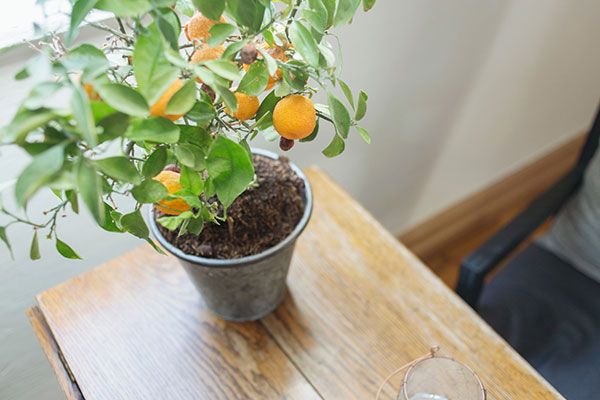
Citrus seeds are relatively easy to grow and don’t require cold treatment when grown indoors. Just let the seeds dry out and plant them in the potting mix. While it may take years for these plants to bear fruit, they can make attractive houseplants in the meantime. As Myers notes, “Even if you don’t get lemons or limes, citrus blossoms smell amazing. “
Apple Trees
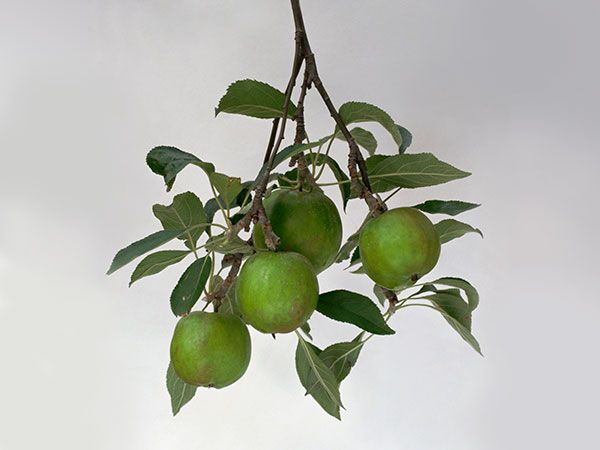
Growing apple trees from seeds requires patience but can be a rewarding experience. Because apples do so well in cold weather, they often need low temperatures to break the seed’s dormancy—which you can do in your refrigerator. Myers explains the process:
- Harvest several seeds and let them dry out.
- Pack the seeds in peat moss in a plastic bag and refrigerate for 12 weeks.
- Remove seeds from the peat and plant in potting mix.
- Once the tree grows, transplant it outdoors if climate permits.
Avocado
Regrowing an avocado tree from its pit is another simple project, one that features in many school science projects.
- Remove the pit from the avocado and wash it thoroughly.
- Insert three or four toothpicks into the pit and suspend it over a glass of water, so that the bottom of the seed is submerged in water.
- Place the glass in a warm area with indirect sunlight.
- Change the water regularly.
- In a few weeks, roots and a stem will begin to sprout. Once the stem reaches 6 inches, trim it back to 3 inches to encourage growth.
- When the roots are well-developed and the stem has new leaves, plant the pit in soil.
You can also sprout an avocado pit by wrapping it in a damp paper towel, putting it in an open plastic baggie, and setting the bag in a warm, dark place for a few weeks. However, the glass of water method allows you to watch its growth.
Strawberries
Starting strawberries from seeds found on the outer surface of the fruit can be a time-consuming but fulfilling process. Save the seeds and allow them to dry completely. Plant the seeds in a tray filled with potting mix and lightly cover them with soil. Keep the soil consistently moist and place the tray in a sunny area.
Germination can take a few weeks, but eventually, you will notice small seedlings. Transplant them into individual pots once they are strong enough. Note that home-grown strawberries will be smaller than their grocery store counterparts.
Herbs and Spices From Kitchen Leftovers
Many common herbs and spices can be easily regrown from kitchen scraps, providing fresh flavors for your cooking.
Basil and Cilantro
To regrow basil and cilantro:
- Place stem cuttings in a glass of water.
- Change the water every few days until roots develop.
- Transfer to potting soil once roots are about 2 inches long.
Ginger and Turmeric
Ginger and turmeric can be regrown from small pieces of rhizome—that is, the underground stem.
- Plant a piece with visible growth buds in potting soil.
- Keep the soil moist but not waterlogged.
- Place in a warm, partially shaded area.
Mint and Rosemary
Mint and rosemary can be easily propagated from cuttings.
- Cut a 4- to 6-inch stem from an existing plant and remove the lower leaves.
- Place the cut end in a glass of water and set it in a bright, warm location.
- Change the water every few days.
- Once roots develop, transplant the cutting into soil.
Pro tip: Mint and rosemary thrive in well-drained soil and should receive plenty of sunlight.
Tips for Successful Scrap Gardening
Follow these best practices to ensure your kitchen-scrap garden thrives.
Proper Preparation of Scraps
Before planting, clean your scraps thoroughly and remove any signs of decay. Allow cut surfaces to dry for a day before planting to prevent rotting.
Watering and Fertilizing Tips
Water your plants thoroughly after planting and maintain consistent moisture. Use a balanced, water-soluble fertilizer every few weeks to promote healthy growth.
Troubleshooting Common Issues
Watch for signs of pests or disease, such as yellowing leaves or wilting. Ensure proper drainage to prevent root rot, and provide adequate light to avoid leggy or floppy growth.
Composting Kitchen Scraps: An Alternative Approach
Not all kitchen scraps are suitable for regrowing. Home composting offers an alternative way to recycle food waste.
Benefits of Composting
Composting kitchen scraps:
- Reduces landfill waste
- Creates nutrient-rich soil for gardens
- Improves soil structure and water retention
How To Start a Compost Bin
To begin composting:
- Choose a bin or designated area for your compost pile.
- Layer green materials (food scraps) with brown materials (leaves, paper).
- Keep the pile moist and turn it regularly to aerate.
- Monitor the pile for temperature (130-160 degrees Fahrenheit) and odor.
- When the compost smells like dirt and no longer heats up after mixing, allow it to cure for a month.
- Use the finished compost to enrich your garden soil.
Our Conclusion
Kitchen-scrap gardening offers a sustainable and engaging way to reduce food waste while cultivating fresh produce. From regrowing vegetables like potatoes and celery to nurturing fruit trees from seeds, this method provides endless possibilities for gardeners of all skill levels. While not every scrap will yield a bountiful harvest, the process of growing plants from kitchen leftovers is both educational and rewarding.
